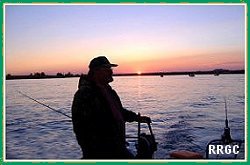Nutrition
Wild Game Nutrition
Capt. Lewis
Tuesday January 20th 1806.
On the morning of the eighteenth we issued
 6 lbs. of jirked Elk pr. man, this evening 6 lbs. of jirked Elk pr. man, this eveningthe Sergt. repoted that it was all exhausted; the six lbs. have therefore lasted two days and a half only. at this rate our seven Elk will last us only 3 days longer, yet no one seems much concerned about the state of the stores; so much for habit. we have latterly so frequently had our stock of provisions reduced to a minimum and sometimes taken a small touch of fasting that three days full allowance excites no concern.
*
Wild game is high in protein and more nutritious than domestic animals because it has less fat and lower cholesterol levels. A good diet consists of consuming food with low total fat and saturated fat while limiting the daily intake of cholesterol. Consuming wild game can help meet these objectives because the meat is leaner and most fats should be trimmed from the meat to improve flavor.
The nutrient values in Table 1 includes domestic meats so a comparison between domestic and wild game can be made. The species shown in bold type are those commonly harvested in the Northwest. The values contain in Tables 1 are based on 100 grams of lean meet which is about 3.5 ounces.
Table 1
Fish and Shellfish are rich in vitamins, minerals, high quality protein and low in saturated fat making them a healthy source of food. Fish and shellfish is a good source of Omega 3 fatty acids which has been reported to be beneficial in preventing coronary heart disease. Salmon, trout and bass are very good sources of Omega-3. The information in Table 2 is based on 100 grams of raw fish or shellfish.
Table 2
In order to obtain additional nutrient values for various types of wild game, fish and shellfish, you can obtain this information from the U.S. Department of Agriculture Database. If you are interested in Omega 3 values you will need to look at polyunsaturated fatty acids and add the 20:5n-3 and 22:6n-3 values.
|
|||||||||||||||||||||||||||||||||||||||||||||||||||||||||||||||||||||||||||||||||||||||||||||||||||||||||||||||||||||||||||||||||||||||||||||||||||||||||||||||||||||||||||||||||||||||||||||||||||||||||||||||||||||||||||||||||||||||||||||||||||||||||||||
